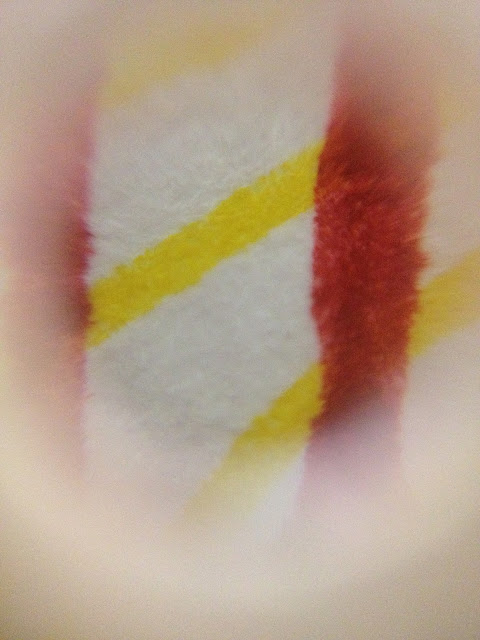This is a very simple pattern. There's no shortage of similar patterns out there for free, but this is one of the first patterns I actually made myself a few years ago. I think a lot of people make an octopus pattern early on in their pattern creations because single crocheting into a chain creates a very curly shape and you think of hair or octopus tentacles.
This creature is made using cotton yarn and as small a hook as you are comfortable using so that there are not gaps between stitches. I used a 4mm hook and Sugar N Cream Cotton yarn. I worked this in continuous rounds, marking the beginning of each row with stitch marker. The head contains a little poly-fil stuffing. Add the stuffing whenever you feel comfortable.
The Pattern:
Top of the head down to base of head:
R1: Ch 2, 6 sc in 2nd chain from hook (or magic loop) [6]
R2: 2 sc in each sc [12]
R3: Sc, inc around [18]
R4: Sc around [18]
R5: Sc around [18]
R6: Sc around [18]
R7: Sc, dec around [12] (work decreases in the front loops only to reduce gaps)
R8: Sc around [12]
R9: Sc, dec around, slip to first stitch in row [8] (final row should be the number of tentacles)
Tentacles:
Begin in any stitch - In the back loop only (the outside edge of the bowl shaped head - the front loop will be used to close the hole in the head), sc, ch 20 (or any number you like). Slip into the first two stitches of the chain and sc into 2 loops of each chain back to the body (this creates the curl in the tentacles). Slip into the side of the sc at the beginning of the chain. Repeat for the seven remaining tentacles.
After completing the final tentacle, slip to the side of the first tentacle's sc. Ch 1, sc in each front loop of the stitches that you worked in the back of previously (about 6 is fine if it gets tight), slip to first sc, cut yarn and whip through each stitch, pull tight and weave in.
Eyes:
I used a two round little cup shapes to hold in some large googly eyes, but any other method would work if they need to be safe for a child.
For the cups:
R1: Ch 2, 6 sc in first ch (or magic loop)
R2: In the back loop only, sc in each stitch (add or subtract a stitch to fit googly eye), place googly eye, sew to head.
You'll need to adjust this if you're using a different size. My oval eyes were 9 sc, and large round eyes were 7 sc.
Embellishments:
A few sequins or beads sewn onto the tentacles will resemble their suckers. Solid color or color changing yarn will give you different cool results.
Mr. Octopus is now on ravelry! Yay!


































